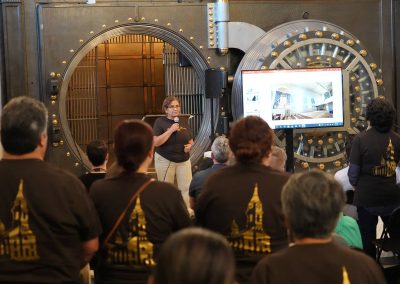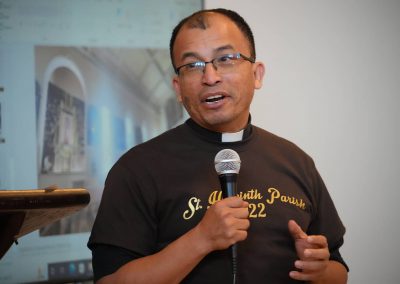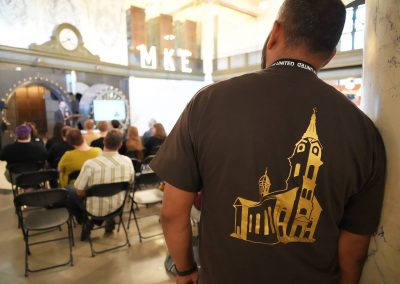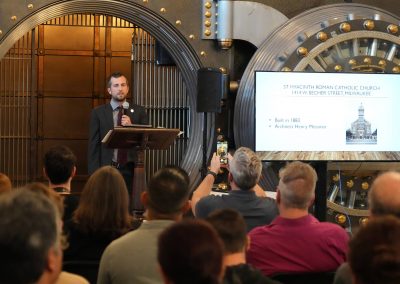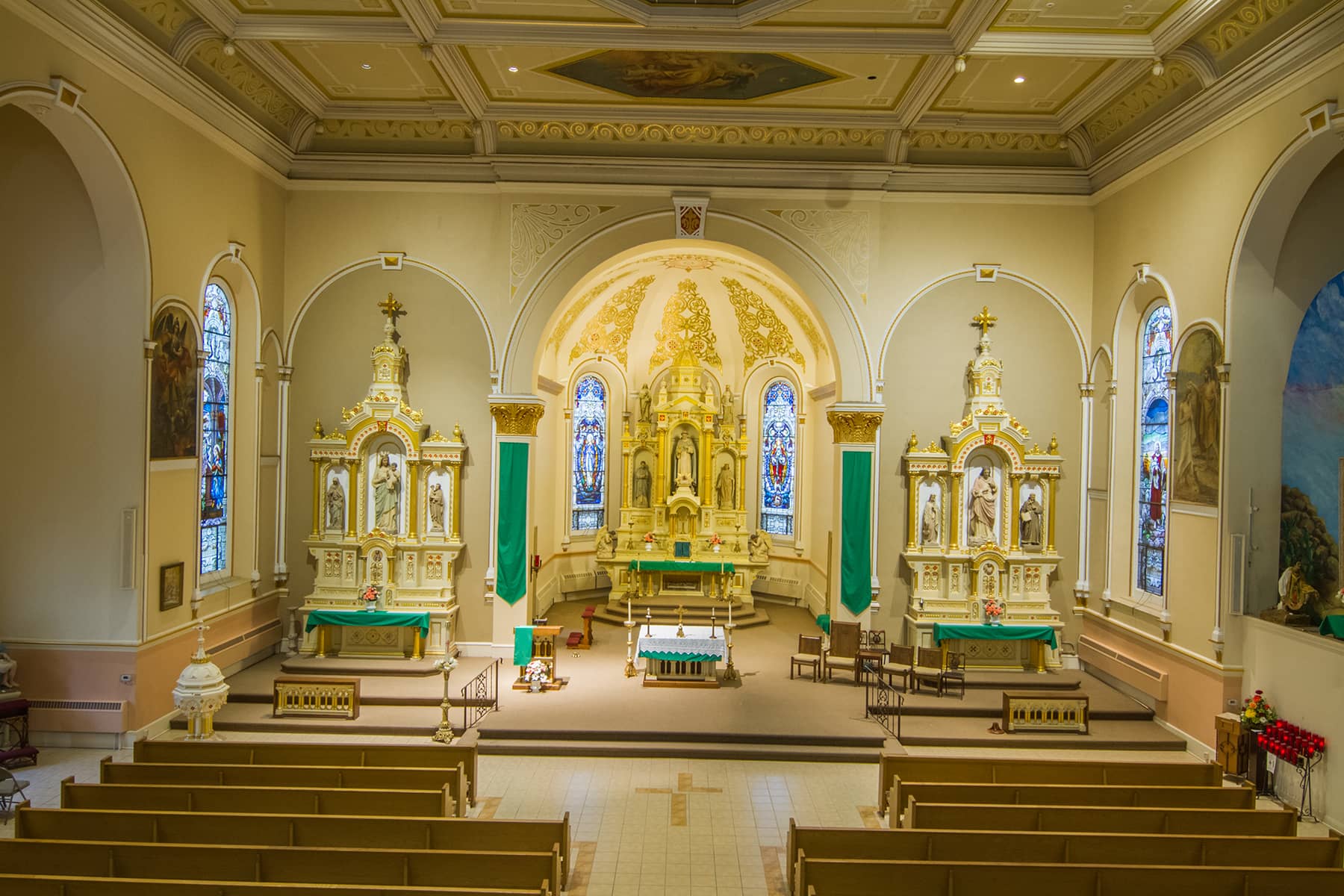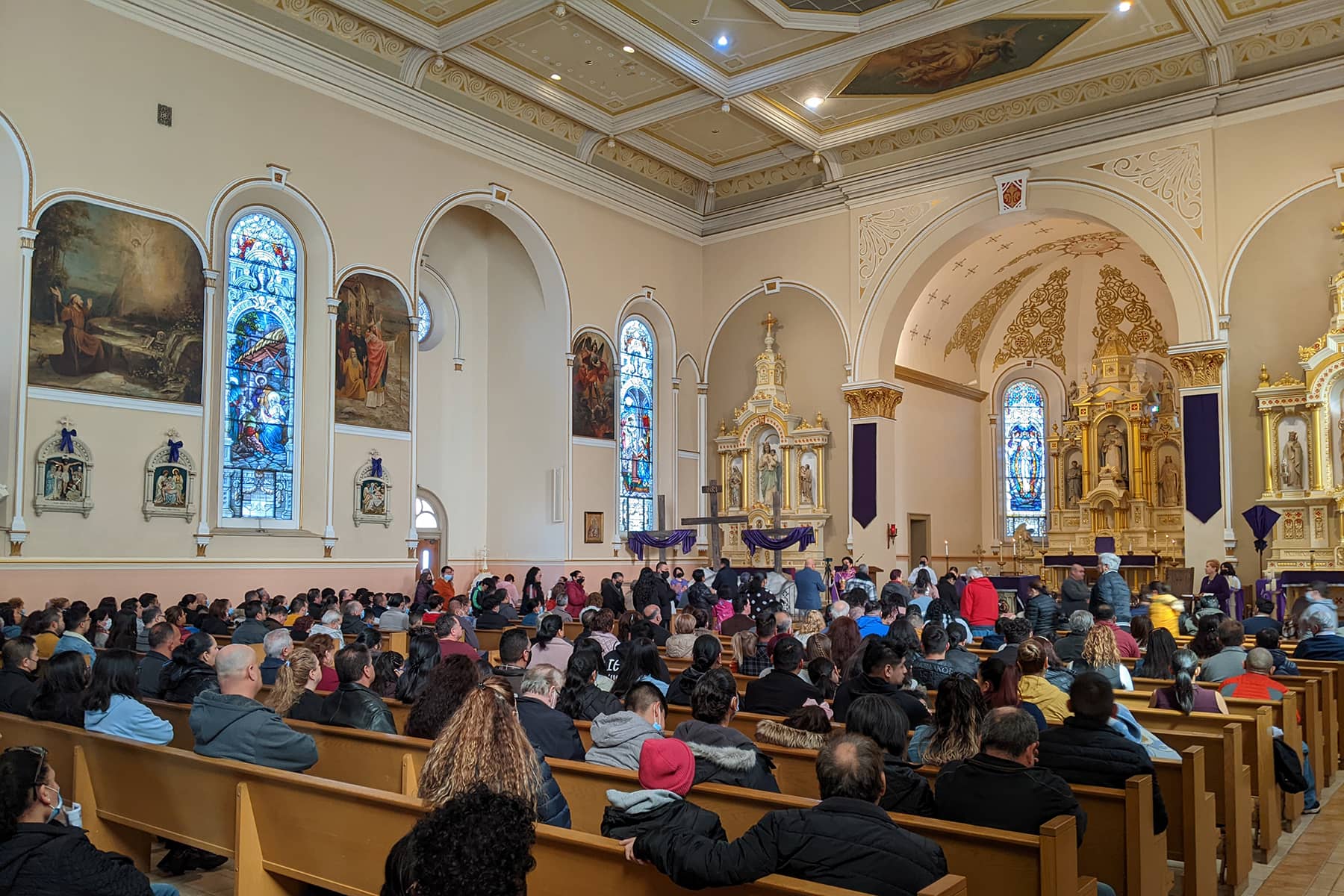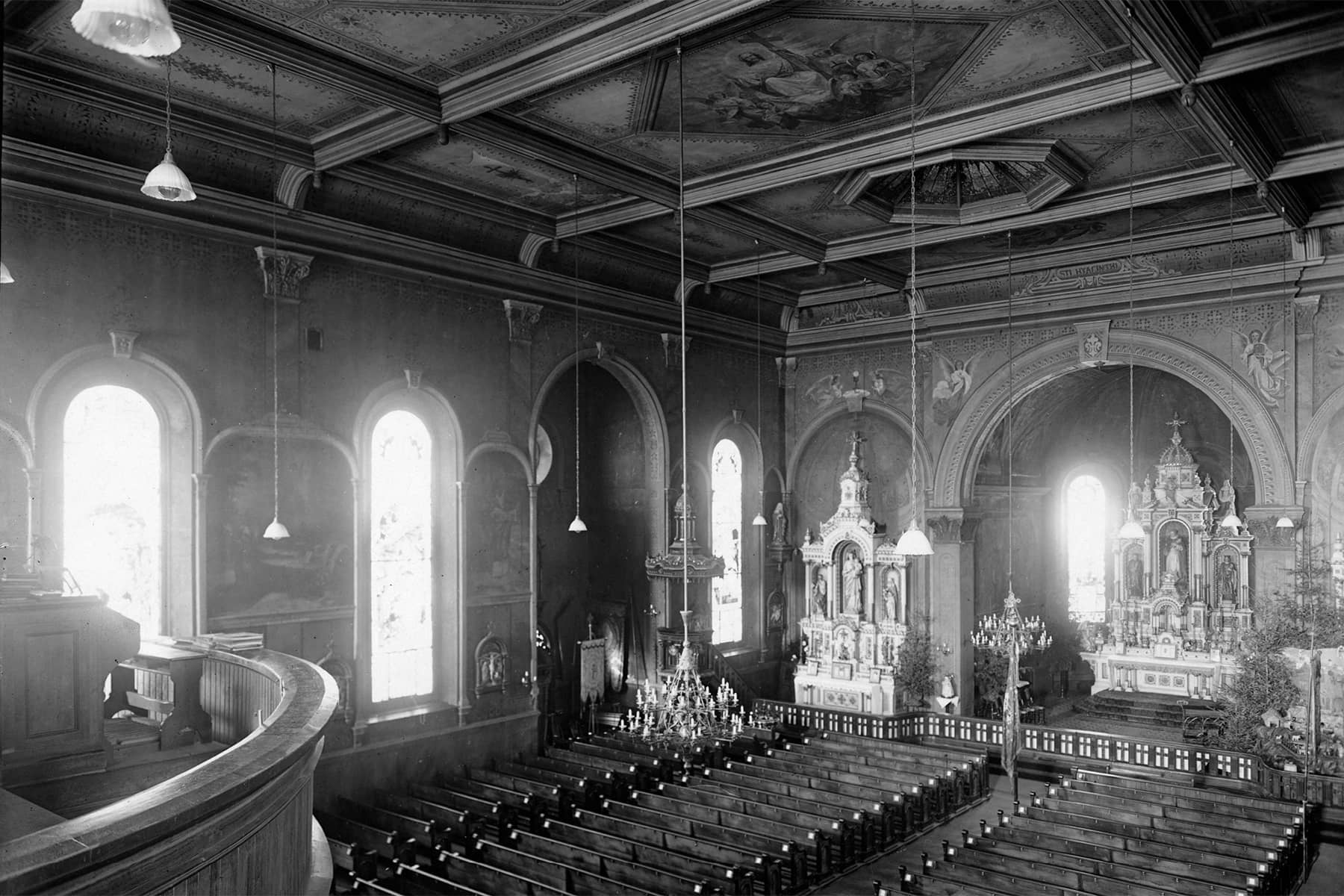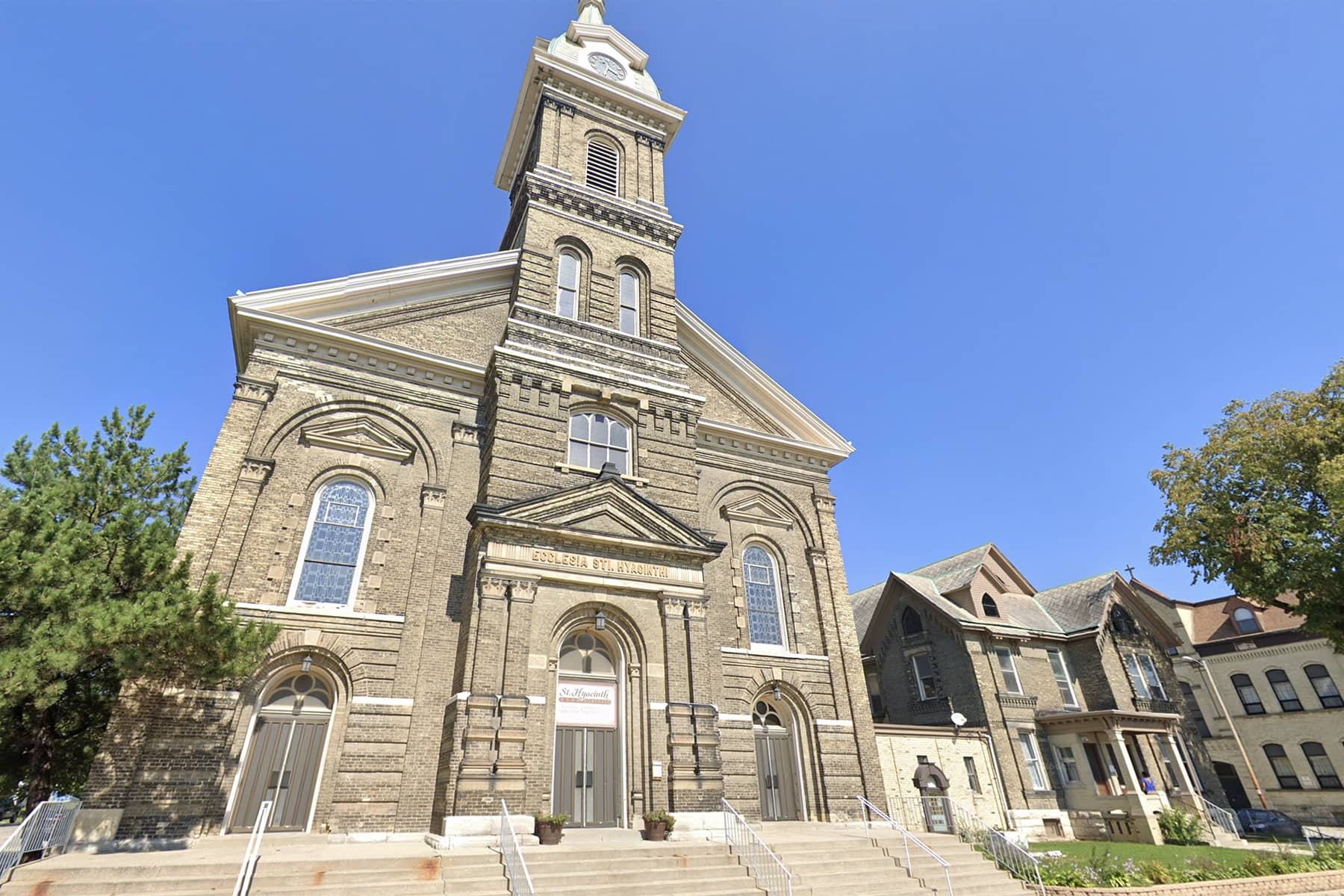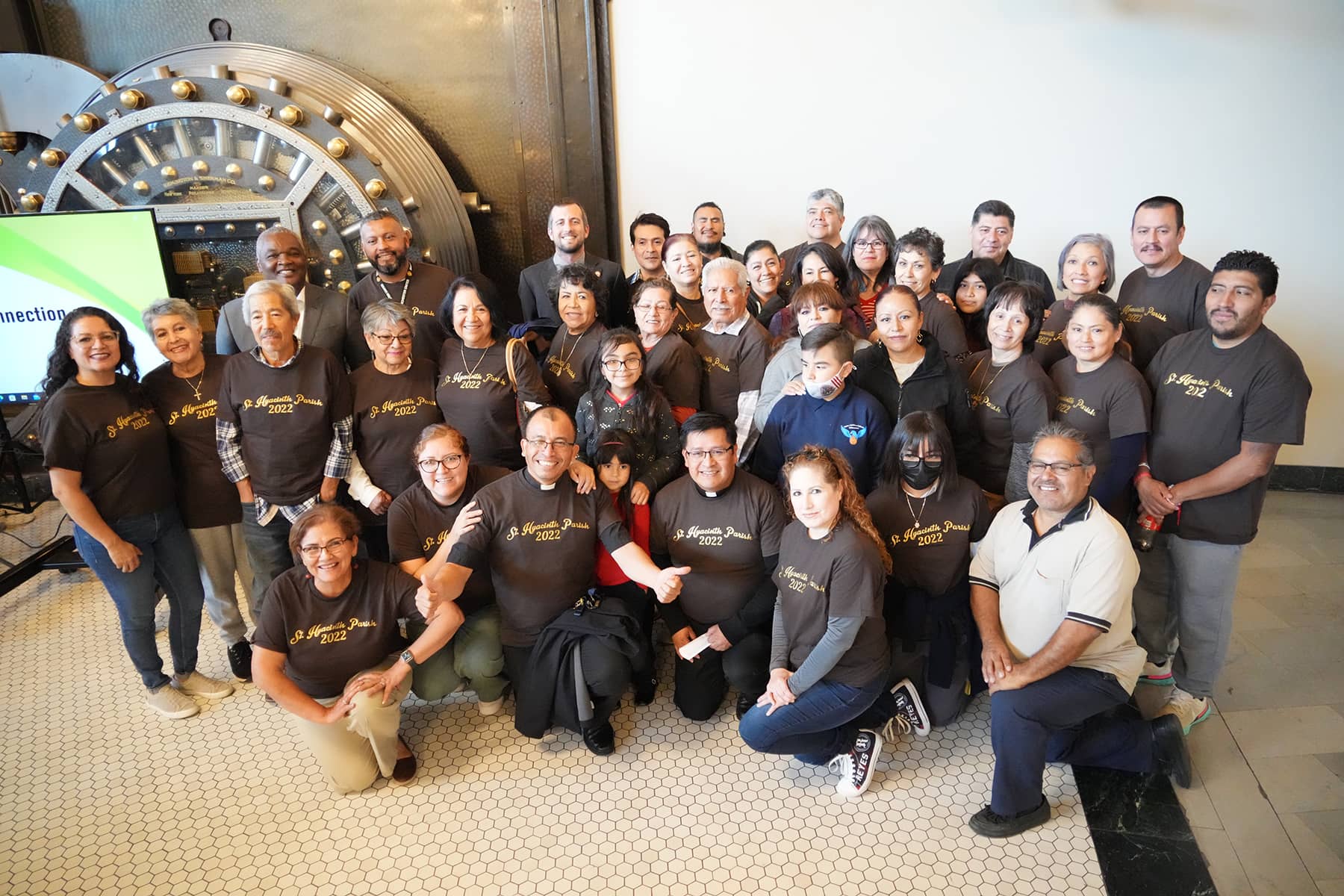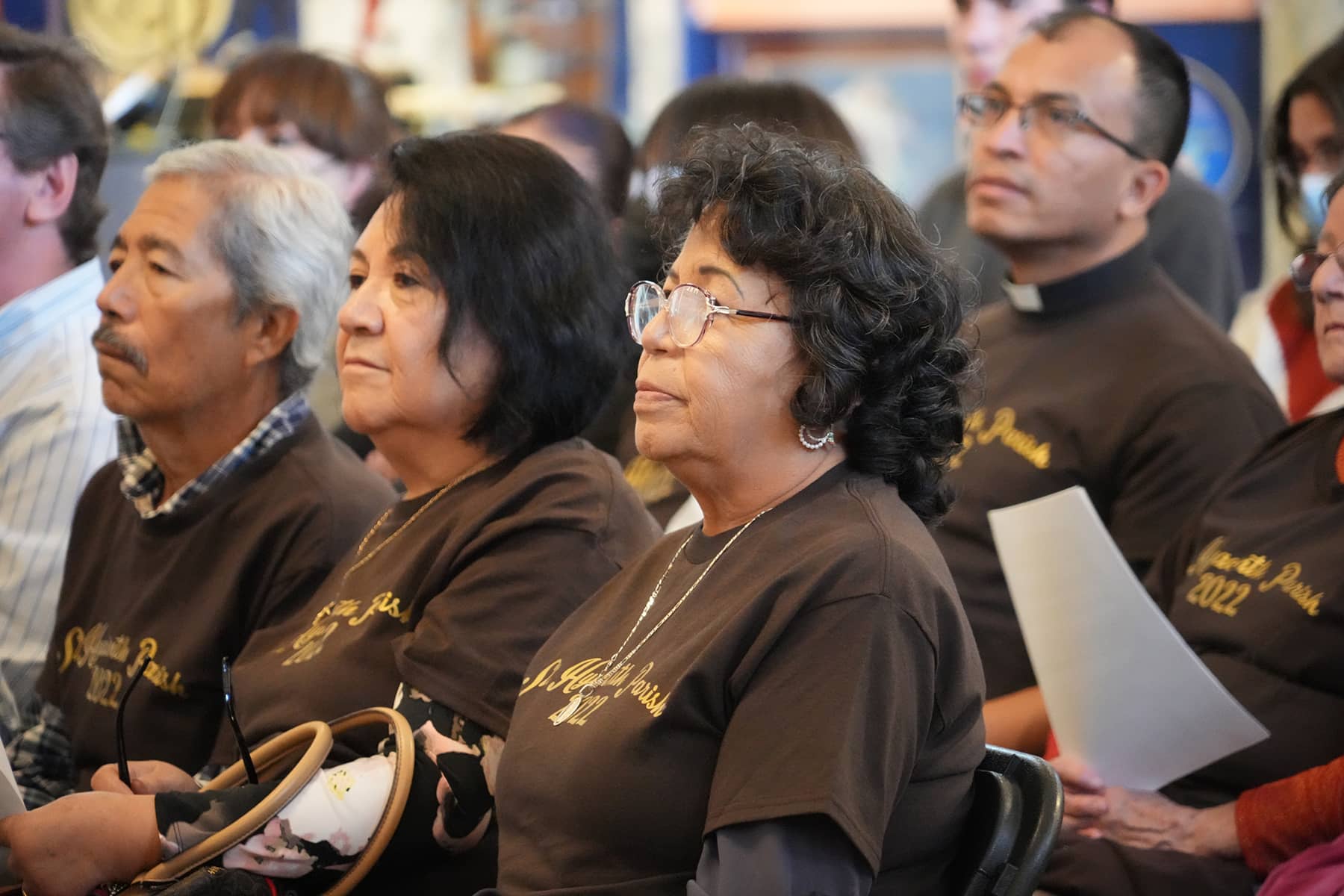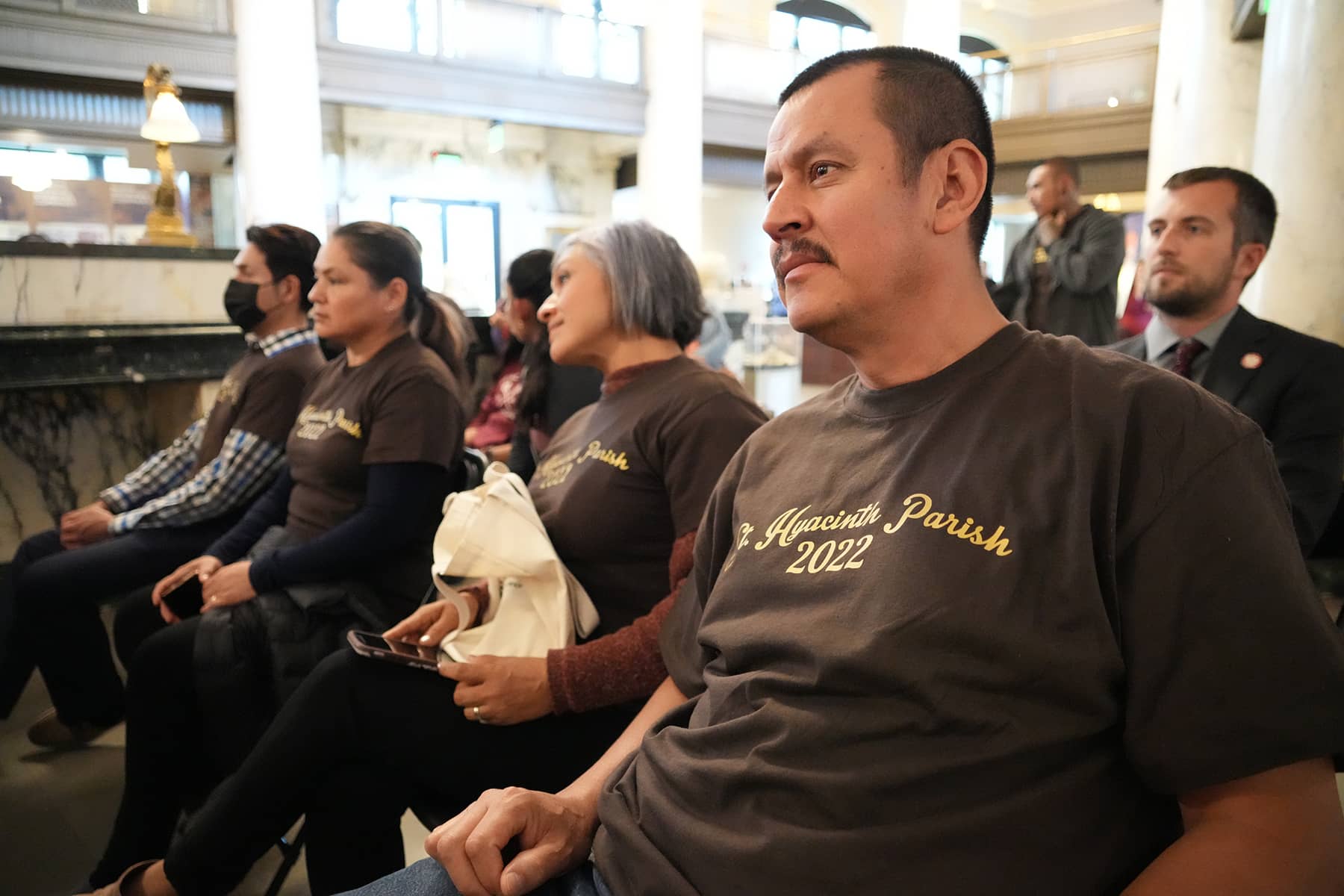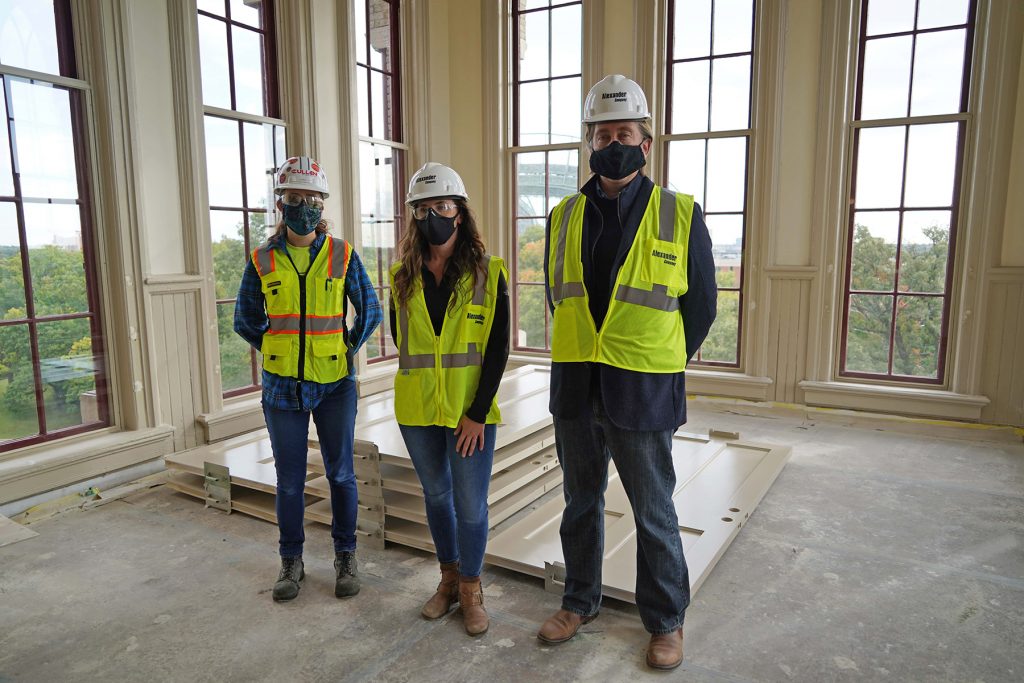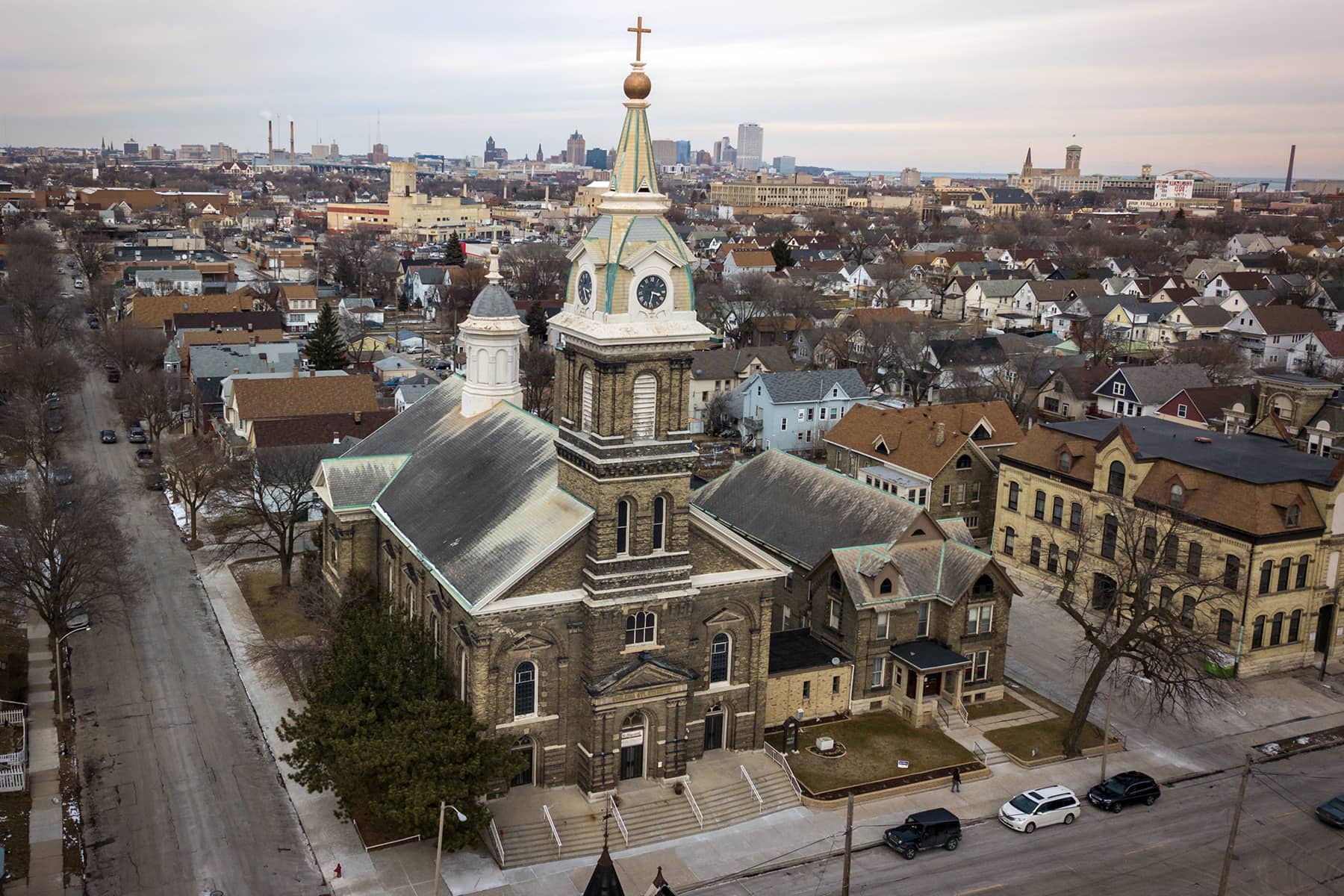
The Milwaukee County Historical Society’s Landmarks Committee recognized St. Hyacinth Roman Catholic Church, at 1414 W. Becher Street, as a County Landmark on November 14.
Named for Hyacinth of Poland, the Church was a Polish-American neighborhood institution for more than 100 years. It was a focal point for the immigrant Polish community to come together in expression of its culture and Catholic faith.
“Naming St. Hyacinth a Milwaukee County Landmark means more than just a title, it means a task for the present and future of the Catholic presence on the south side of Milwaukee,” said Rev. Hugo Londoño, pastor of St. Hyacinth Church. “This parish was founded and built by Polish immigrants, and St. Hyacinth is now cherished and supported by new immigrants, the Hispanic community.”
Swiss-born Milwaukee architect Henry Messmer designed the 1883 Cream City Brick church in the Renaissance style, with some Gothic forms and a Polish spire. Messmer also designed the East Side’s Ss. Peter and Paul Church and the Frederick Miller Cellars at the Miller Brewery. The church retains 19th century art, with stained windows and stations of the cross in Polish.
St. Hyacinth Church was founded in 1883 as the third Polish Catholic church in Milwaukee by the Polish Franciscan, Monsignor Jacek “Hyacinth” Gulski (1847-1911). In 1873, Gulski was compelled to flee the partition of Poland in the German Empire for resisting forced-Germanization, anti-Catholic, and anti-Polish persecution during the Kulturkampf (culture struggle). He came to Milwaukee where he became a prominent leader of the Polish community and Milwaukee Archdiocese.
“Both the Polish and Hispanics are rooted in their Catholic faith. Both love the beauty of sacred art in their churches and love to participate in the sacramental life of the Church,” added Rev. Londoño. “This is why I wanted St. Hyacinth to become a landmark, to say, ‘Thank you!’ to the Polish community and to say, ‘Let’s keep it up!’ to the Hispanic community.”
As neighborhood demographics changed, St. Hyacinth now serves a similar role for immigrant Latinos as it did for Poles. The more than 1,000-family parish honors its Polish heritage and partially through historic recognition, strives to maintain the Polish legacy passed down to them while leaving their own.
Recently, there was uncertainty if the parish could continue due to accumulating deferred maintenance. The church’s census tract has half the metropolitan household median income and the parish was unsure if it could raise the approximate $430,000 necessary to replace its depreciated 98-year-old roof.
Fortunately, through fundraising and a generous donation from a suburban Catholic parish, the congregation secured a bank loan and a new roof was installed this summer.
© Photo
Lee Matz, St. Hyacinth Roman Catholic Church, Milwaukee Public Library, and Google Streetview

